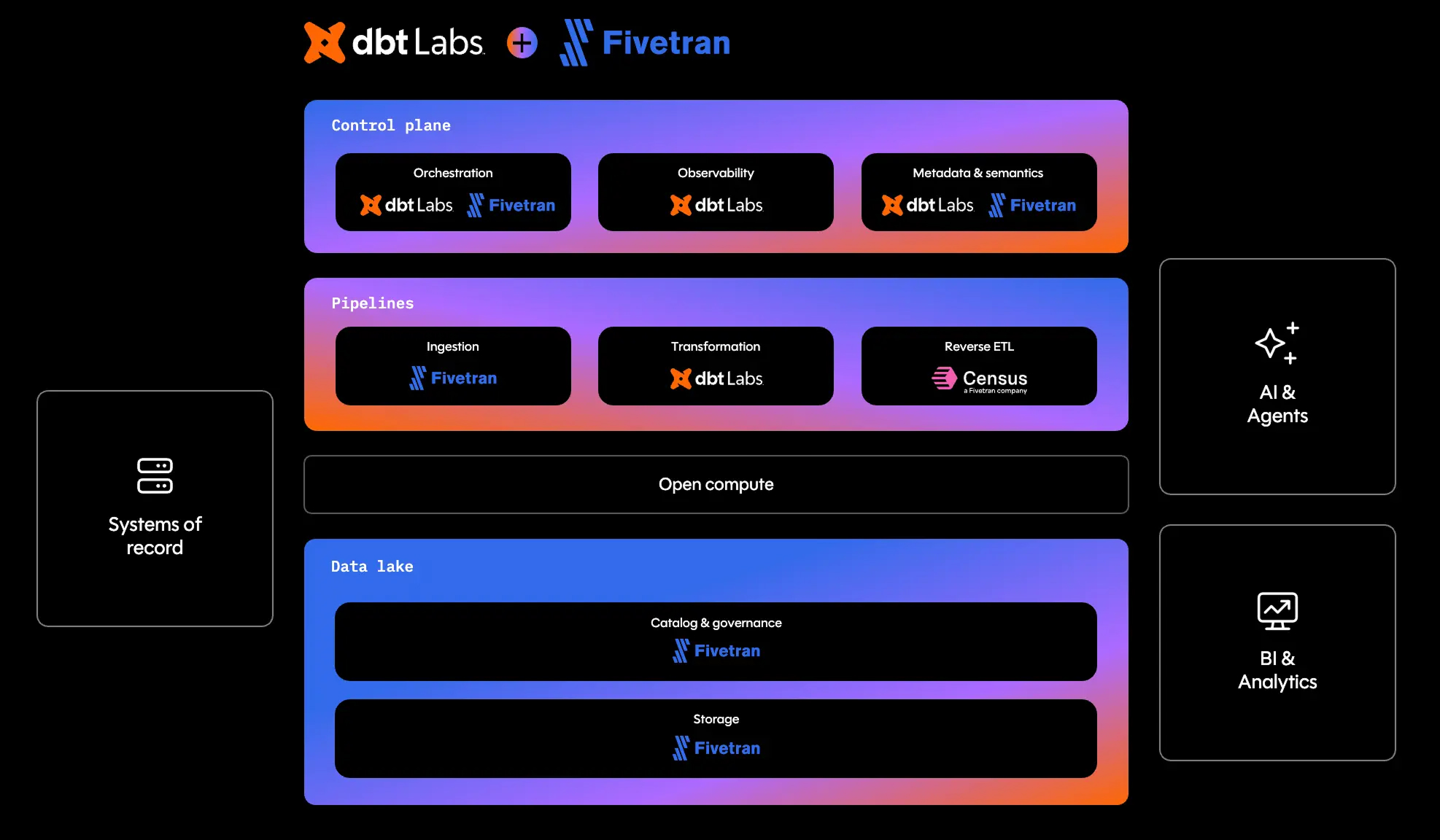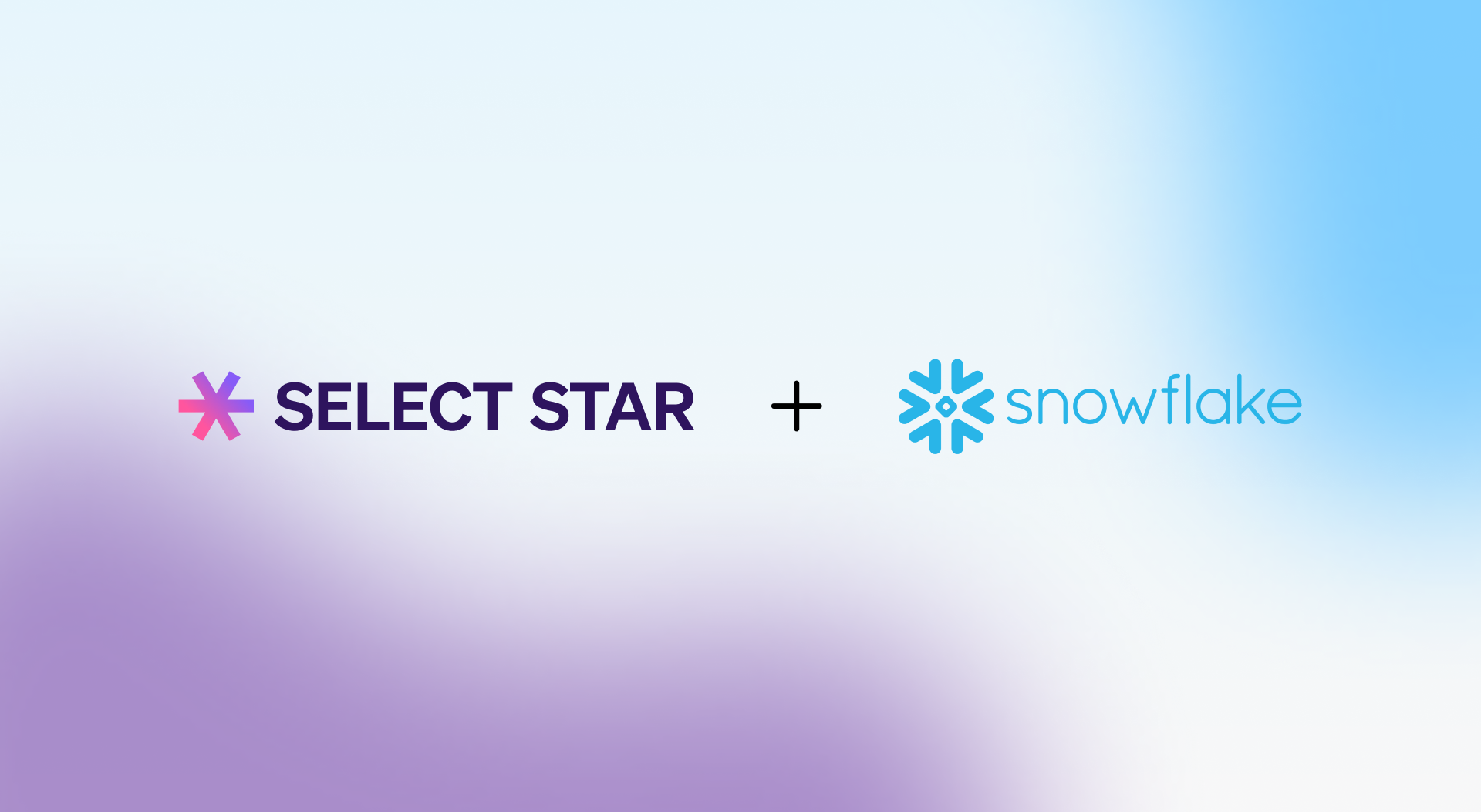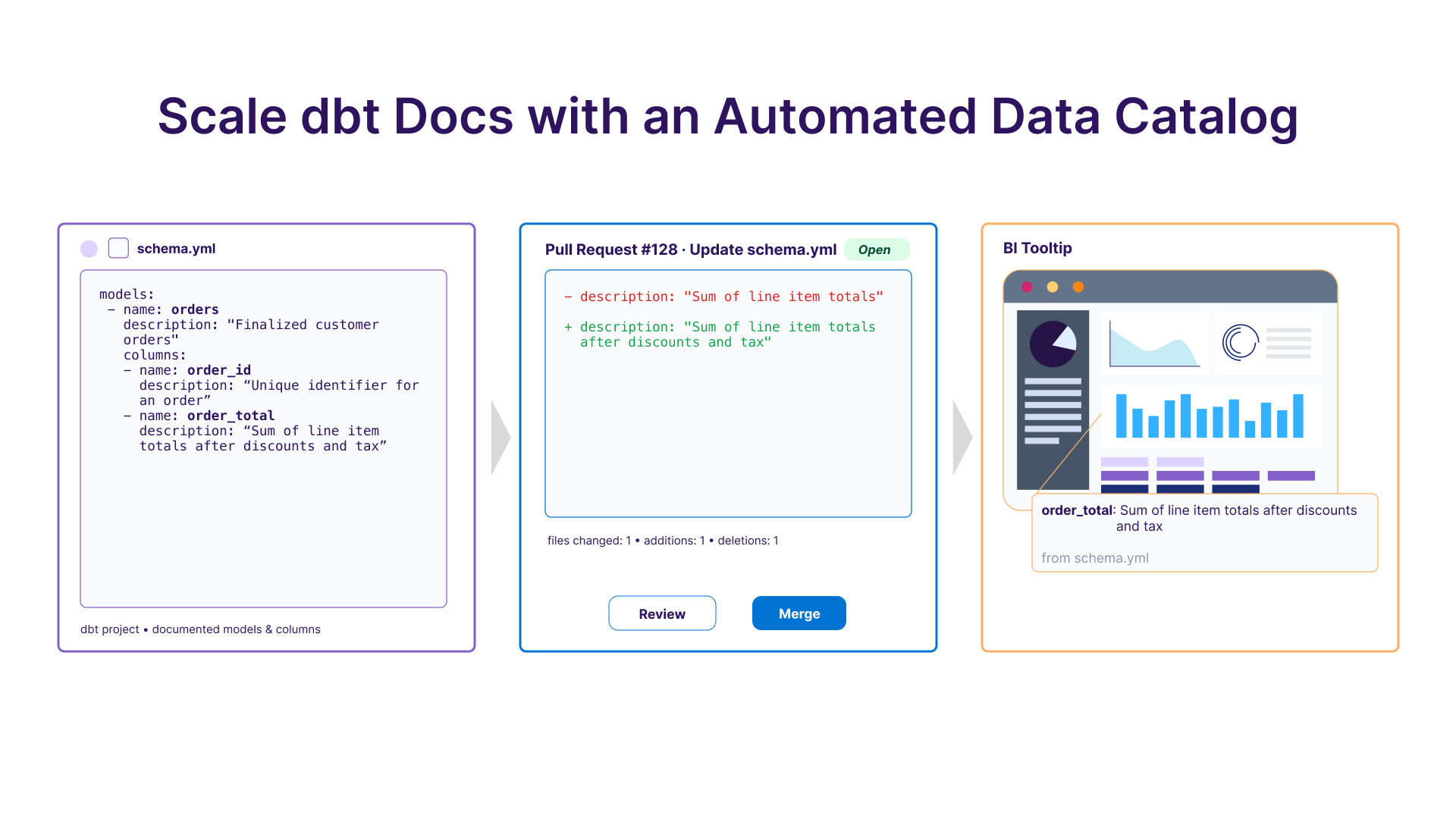Coalesce 2025 opened in Las Vegas with more than 2,000 people in the room and over 14,000 online. The opening keynote set two clear headlines: dbt’s announced merger with Fivetran and a major spotlight on the dbt Fusion engine, now in dbt Platform preview. Together, they signal a shift toward open data infrastructure and AI‑ready analytics. The message was to integrate where it matters without locking yourself to a single compute engine or BI stack. Here’s a practitioner’s recap of the opening keynote and what your data team should know.
The big news: dbt + Fivetran

The dbt + Fivetran merger brings ingestion, transformation, and metadata closer together without dictating your compute layer. On stage, dbt Labs CEO Tristan Handy reiterated commitments to openness and compatibility across engines, catalogs, BI tools, and LLMs. Fivetran CEO George Fraser highlighted its deepening data lake investments, including turnkey Iceberg destinations where Fivetran acts as the storage steward for compaction, deletes, and other lakehouse hygiene. Fraser also addressed community concerns, saying there would be no changes to dbt licensing or naming.
Why it matters: tighter loops between ingestion, transformation, and metadata mean fewer seams and fewer surprises. The roadmap deliberately avoids a walled garden, emphasizing open standards and multi-engine choice over lock-in, with compatibility across catalogs, BI tools, and LLMs. And for teams leaning into lakehouse patterns, Iceberg-backed destinations make lakes feel more turnkey without constant storage babysitting.
Fusion: dbt rewritten as a compiler (and why data teams should care)

dbt Fusion is a new engine written in Rust that works like a SQL compiler. It understands each warehouse’s dialect, tracks project state, and compiles your code across engines. You feel this in the editor with the dbt VS Code extension: errors show before a query runs, you can preview the output of a single CTE, and Compare Changes gives you a data diff so you can see what will change. When you rename a column, Fusion updates downstream references and flags anything that might break. You can also validate the same project on Snowflake, Databricks, BigQuery, ClickHouse, and more.
Beyond the editor, Fusion helps reduce waste in production. State Aware Orchestration skips models whose inputs have not changed, so you avoid empty runs. Freshness settings like build_after and updates_on: all align rebuilds with your SLAs. Column-aware and aggregated testing removes duplicate scans while keeping quality high. The gains are already being realized: EQT Group, one of the world's largest private equity investors, reported about 60% faster runtimes and 45% lower warehouse cost after adopting Fusion. A dbt internal project saw 9% savings from reuse and 55% from tuning, for a total of 64% cost savings.
AI-ready analytics in dbt with MCP, MetricFlow, and agents
The keynote’s AI story was not about having a model write SQL. It focused on giving models the right context and tools, and on building in error correction. The dbt MCP server, now generally available as a remote service with OAuth, is a governed bridge for IDEs and model providers. It lets them read models, lineage, and metrics and, when permitted, run dbt commands with proper authentication.
MetricFlow will return to open source under Apache 2.0, which moves the industry toward deterministic, governed metrics that teams can trust across tools. dbt Agents are also on the way, with developer and observability agents to propose and apply changes and troubleshoot failures, and discovery and analyst agents to help people find the right data and answer questions using approved definitions.
Norges Bank Investment Management (NBIM) rolled out conversational analytics through the MCP server across the organization. They saw roughly 10x the adoption of their previous catalog, fewer tickets, and faster time to insight, and now run hundreds of production agents that monitor systems and take action because answers are grounded in governed context.
For context beyond dbt, Select Star fills the gap by giving agents and other tools end-to-end data context: where a field originated in a source system, which Fivetran connector brought it in, which dbt model produced it, which semantic definition or MetricFlow metric describes it, and which dashboards and notebooks depend on it. Agents can also see owners, certifications, usage, and PII tags so they choose the right asset and explain why. Those same signals make it easy to audit answers and retire stale assets when usage drops.
Your path to open, AI-ready analytics with dbt + Fivetran and Fusion
The Coalesce 2025 opening keynote put the focus on metadata. Fusion and agent-driven workflows can increase throughput and confidence if your metadata is reliable and visible. Here’s where to start.
- Pilot Fusion on a bounded project and benchmark runtime and cost. Turn on CI diffs and impact analysis so reviewers can see the effect of a change.
- Stand up the remote dbt MCP server in a sandbox, scope permissions carefully, and log and review agent actions.
- Require certified assets for any production answer.
- Align metrics by pairing MetricFlow with your existing layer and certifying a small set of cross-team metrics first.
- Plan for a multi-engine reality by enforcing naming and ownership standards and watching for duplicates and forked models.
Want deeper context for AI and analytics in dbt and across the rest of your stack? Connect with our team to see how Select Star adds business definitions, end-to-end lineage, ownership, and certifications, and usage signals that give AI and agents a trusted starting point.









